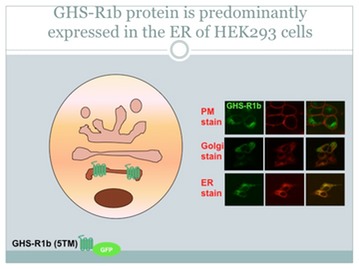The reason for studying GHS-R1a was that it had a naturally-occuring mutant with just the first 5 transmembrane-spanning domains. As a result, this 'receptor' is dysfunctional as it cannot recognise the endogenous agonist ghrelin. When cells are transfected with the GFP-tagged version of this protein (known as GHS-R1b), we can see that none of the 'receptor' gets to the cell surface; it is stuck in the ER. One can think of the ER as a quality control processing unit; if a mutant protein is produced by the cell, it is not transported to the cell surface.
